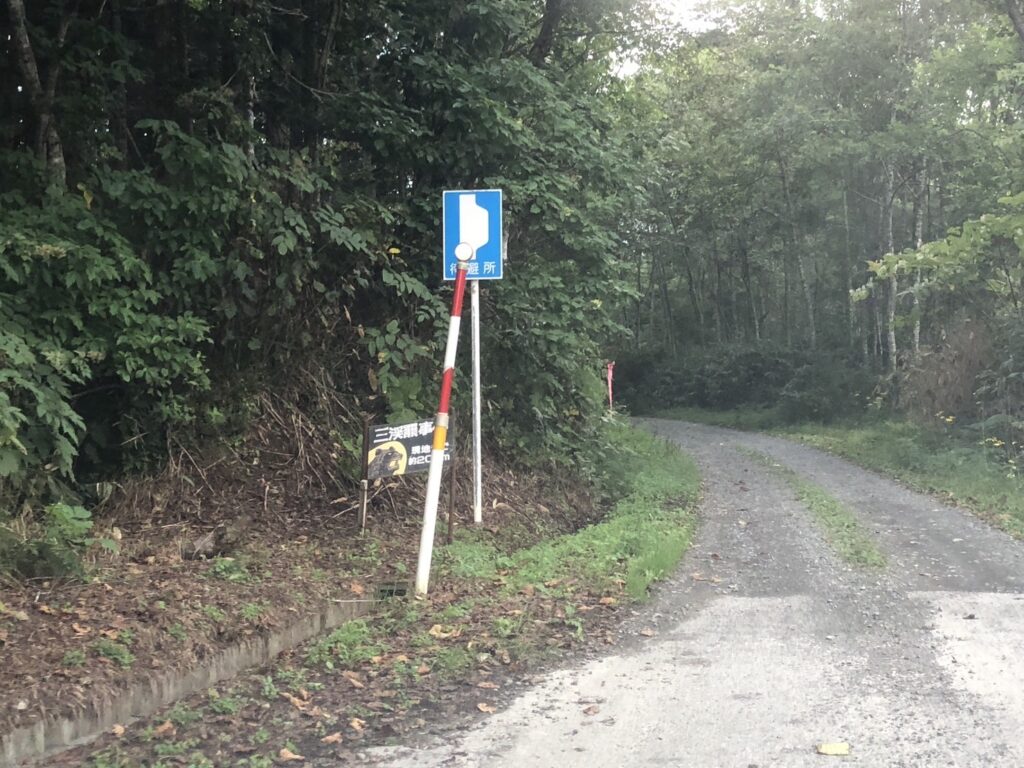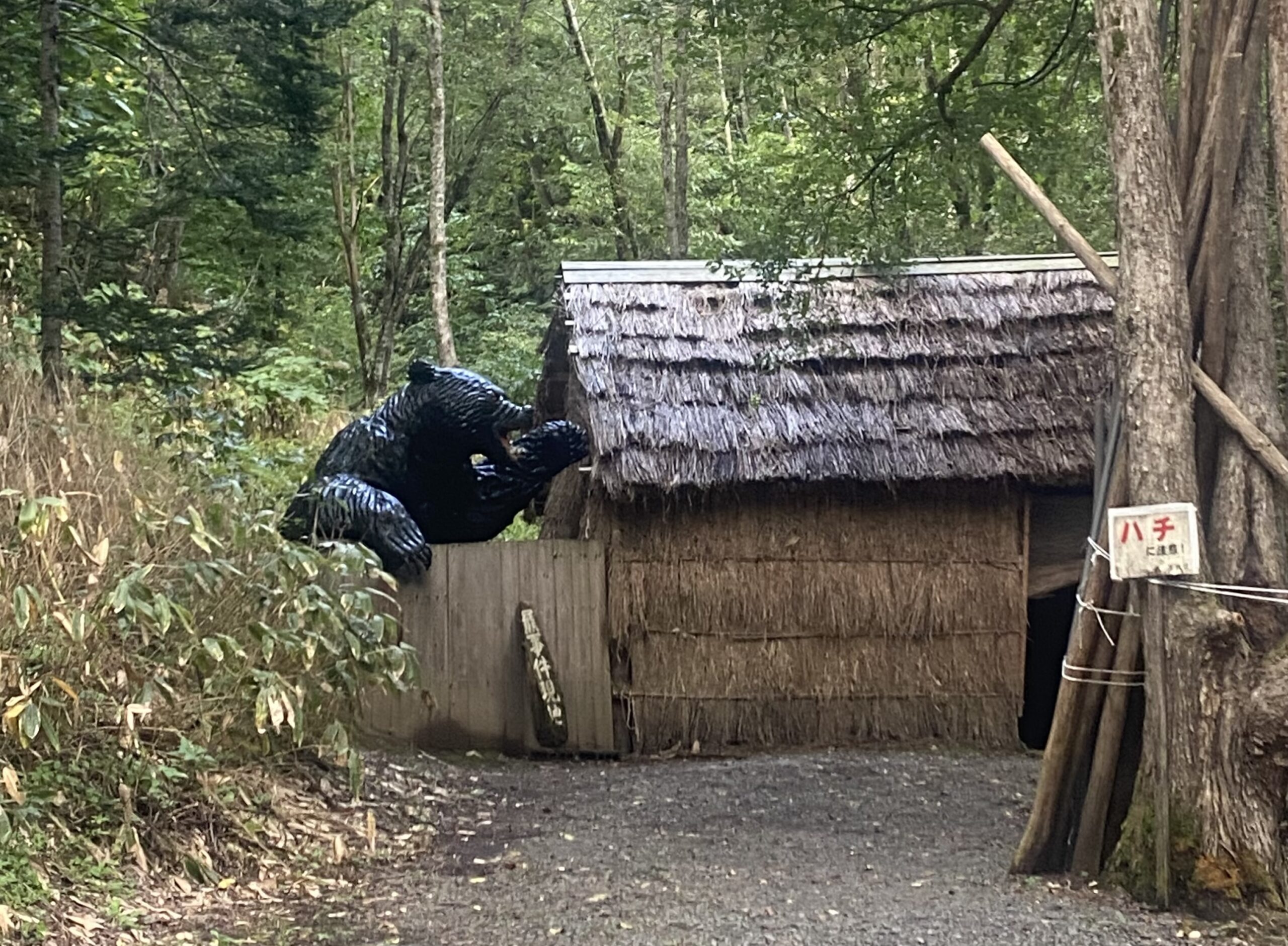The Sankebetsu bear incident is known to many Japanese as “the worst bear attack in Japanese history” that occurred in Hokkaido about 100 years ago.
This article provides basic information about the restoration site, my impressions of the actual visit, and how to access the site from the airport.
Basic Information of the Sankebetsu bear incident site
- Address: Sankei, Tomamae, Tomamae District, Hokkaido 078-3638
- Hours: 9:00 AM – 5:00 PM
- Closed for Winter: November 1 to May of the following year
- Parking: Free parking available
- Admission: Free
- restroom: nothing
- Official Website: http://www.town.tomamae.lg.jp/section/shokouroudou/lg6iib0000000ls1.html
It will remain closed until May. Please check the official website for the latest information.
What is the Sankebetsu Bear Incident?
The Sankebetsu bear incident occurred in Tomamae-cho, Hokkaido in 1915 and is considered the worst bear attack in Japanese history.
A huge brown bear, estimated at 340 kg, appeared in a human village, taking the lives of seven people and destroying many houses.
This incident was later preserved as a restored site and remains as a valuable source of information on the situation at the time.
It is the most famous bear attack case in Japan, partly because it has been made into media many times, such as in Akira Yoshimura’s novel “Uruma Storm,” and widely spread on social media.
My Journey to the Sankebetsu Brown Bear Incident Reconstruction Location

Visiting the Sankebetsu Brown Bear Incident site offers a haunting glimpse into one of Japan’s most infamous wildlife encounters. The journey from Sapporo takes about three hours by car, winding through Hokkaido’s scenic countryside. As you approach within 5 kilometers of the site, a weathered wooden sign marks your proximity to this historic location.

As we approached our destination, a gravel and sand road appeared. It was a little difficult to drive, so we had to be careful, but there was a final sign that told us that our destination was 200 meters ahead.

The final stretch of road transitions to gravel, leading to a modest parking area that can accommodate about 10 cars. The site’s isolation adds to its somber atmosphere – you’re likely to be one of few visitors, if not the only one, during your visit.

Stepping into the restored site, we were overwhelmed by the reality that conveys the horror of those days as it was. The reconstructed houses and explanatory panels carefully describe the details of the incident and how the damage was done. The model of a brown bear was particularly astonishing in its size and power, allowing visitors to feel the threat of nature close at hand.
The site is surrounded by abundant nature and is quiet and serene. I was struck by how this beautiful environment contrasted with the tragedy of the incident. On the other hand, some precautions should be taken when visiting. There were many horseflies and bees around the restoration site, and there were also beehives. Therefore, be sure to bring insect repellent and choose brightly colored clothing to avoid irritating the bees.

This is a place where you can learn about past history in a natural setting and have a valuable experience that will make you think deeply. With these precautions in mind, enjoy a safe and fulfilling visit. The commentary was written in Japanese, so I recommend using Google Photo Translation.
How to Access from New Chitose Airport (By Car)
New Chitose Airport is the largest airport in Hokkaido. Most tourists visiting Hokkaido will probably use this airport.
There are many rental cars available at the airport, so it is recommended to make a reservation in advance.
It takes about 3 hours and 30 minutes by car from New Chitose Airport to the Sankebetsu Bear Incident Reconstruction Site.
Route
After leaving New Chitose Airport, take the Hokkaido Expressway. Exit at the Takikawa IC and drive north on Route 232. This route is relatively smooth and allows you to drive while enjoying the vast nature of Hokkaido.
Time required
Approximately 3 hours and 30 minutes
Caution
During the drive, be sure to rest at rest stops along the way and drive safely. In winter, the road surface may be icy, so it is recommended to check the road conditions beforehand. Also, be careful not to violate speeding laws, as Hokkaido’s roads have few curves and it is easy to drive too fast.
Renting a car at New Chitose Airport

Your trip to the Sankebetsu bear incident restoration site begins on the car rental floor on the first floor of the domestic terminal at New Chitose Airport. Counters of major car rental companies such as Toyota Rent-A-Car, Times Car Rental, and Nissan Rent-A-Car are lined up. Visitors from overseas will need an international driver’s license, a driver’s license from their home country, and a credit card. It is recommended to make reservations at least two weeks in advance, especially during the peak season (June-October). Most car rental companies have English-speaking staff and offer GPS navigation systems with English interfaces.
For more information on how to rent a car, see this article. This is a case study of renting a GR86 from Toyota Rent-A-Car and is sure to be helpful.
Summary
The Sankebetsu Brown Bear Incident site offers a unique glimpse into one of Japan’s most significant historical events. While remote, the journey through Hokkaido’s countryside and the well-preserved reconstruction site make it a worthwhile destination for those interested in Japanese history or wildlife incidents. Remember to respect the solemnity of the location and follow local guidelines during your visit.




Comment Comment